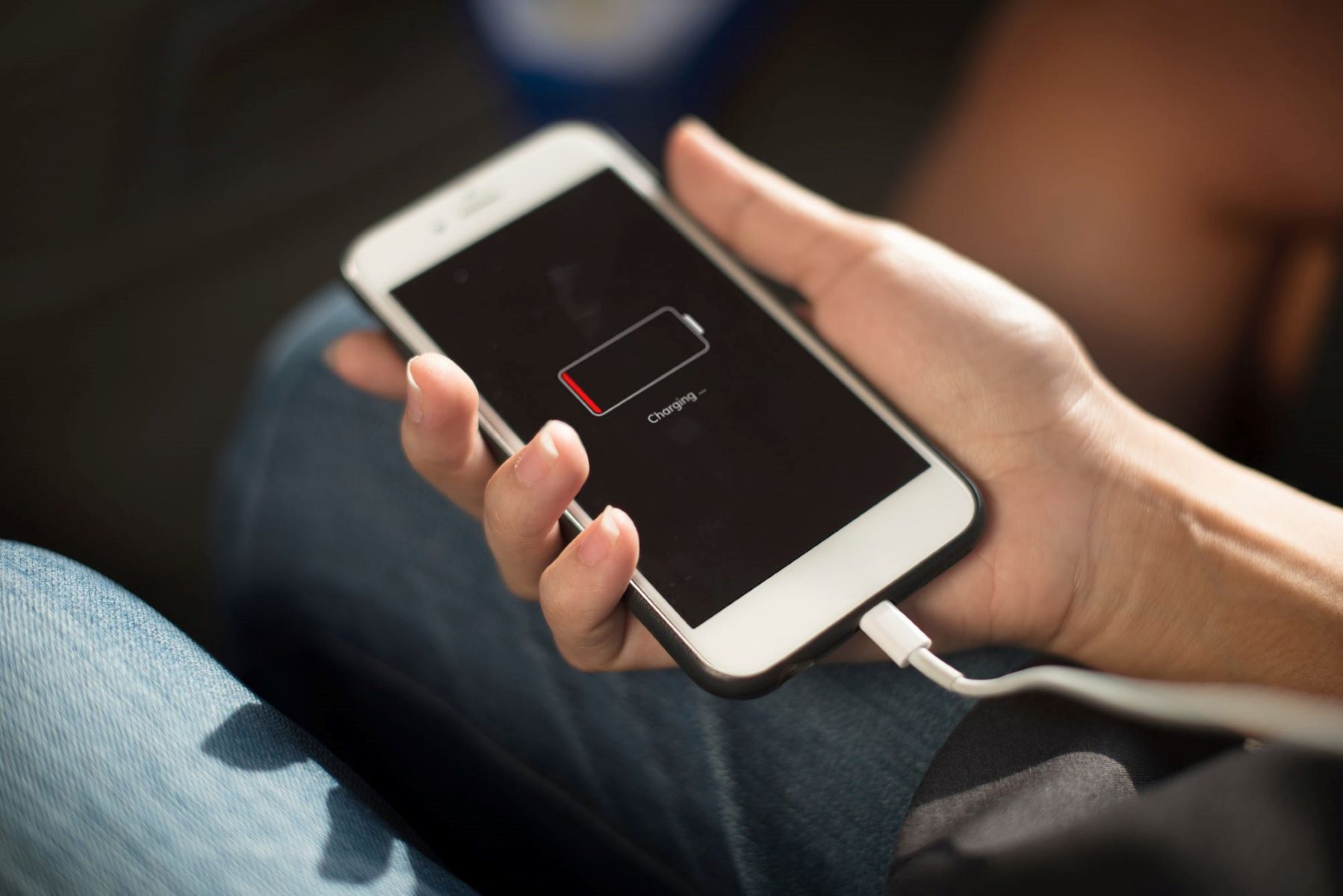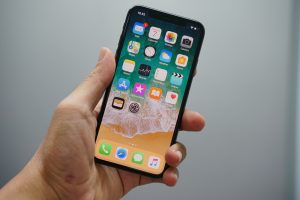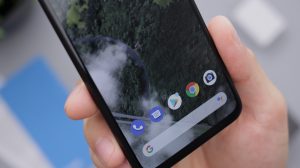Enable Low Power Mode
When your iPhone's battery is running low, enabling Low Power Mode can be a game-changer. This feature reduces the device's power consumption by limiting background app refresh, mail fetch, automatic downloads, and certain visual effects. It's a simple yet effective way to extend your battery life when you need it the most.
Enabling Low Power Mode is a breeze. Simply navigate to "Settings," tap on "Battery," and toggle the switch next to "Low Power Mode" to activate it. Once activated, the battery icon in the status bar turns yellow, indicating that Low Power Mode is on.
By activating Low Power Mode, you can significantly prolong your iPhone's battery life, allowing you to stay connected and productive for longer periods without the need for frequent recharging. This feature is particularly handy during extended outings or when you don't have immediate access to a power source.
So, the next time you find yourself in a pinch with a dwindling battery, remember to enable Low Power Mode and keep the power-hungry features at bay. It's a small adjustment that can make a big difference in preserving your iPhone's battery life.
Turn off Background App Refresh
Background App Refresh is a convenient feature that allows apps to refresh their content in the background, ensuring that the latest information is readily available when you open them. While this feature offers seamless app experiences, it can also drain your iPhone’s battery more quickly. By turning off Background App Refresh for certain apps or altogether, you can conserve precious battery life without sacrificing essential functionality.
To disable Background App Refresh, navigate to “Settings,” select “General,” and tap on “Background App Refresh.” Here, you have the option to turn off the feature entirely or customize it for individual apps based on your preferences. By opting to refresh apps manually or on Wi-Fi only, you can effectively reduce battery usage while still enjoying timely updates when you need them.
By selectively managing Background App Refresh, you can prioritize battery conservation without compromising the convenience of having your favorite apps up to date. This simple adjustment empowers you to make the most of your iPhone’s battery life, ensuring that it lasts longer between charges and keeps you connected throughout the day.
Adjust Screen Brightness
Your iPhone’s vibrant display is undoubtedly captivating, but it also consumes a significant amount of battery power, especially when the brightness is set to high levels. By adjusting the screen brightness to a more moderate level, you can conserve battery life without compromising visibility, ultimately prolonging the time between charges.
To adjust the screen brightness, simply swipe down from the top-right corner of the screen to access the Control Center. Here, you’ll find the brightness slider, allowing you to decrease or increase the brightness to suit your current environment. Additionally, you can navigate to “Settings,” select “Display & Brightness,” and fine-tune the brightness settings to align with your preferences.
By optimizing the screen brightness based on ambient lighting conditions, you can strike a balance between visual clarity and battery preservation. Whether you’re indoors, outdoors, or in low-light environments, making conscious adjustments to the screen brightness can significantly extend your iPhone’s battery life, ensuring that it remains powered throughout your day’s activities.
Embracing this simple yet effective practice empowers you to enjoy your iPhone’s stunning display while maximizing its battery efficiency, ultimately enhancing your overall mobile experience.
Use Wi-Fi Instead of Cellular Data
When it comes to conserving your iPhone’s battery life, leveraging Wi-Fi connectivity over cellular data can make a substantial difference. While cellular data is crucial for staying connected on the go, switching to Wi-Fi whenever possible can alleviate the strain on your device’s battery, allowing you to stay connected without draining power unnecessarily.
Wi-Fi connectivity not only offers faster data speeds but also consumes less power compared to cellular data. When you’re in an environment with stable Wi-Fi access, such as at home, in the office, or in public hotspots, connecting to Wi-Fi can help reduce the load on your iPhone’s battery, enabling it to last longer between charges.
To switch to Wi-Fi, simply navigate to “Settings,” tap on “Wi-Fi,” and select a Wi-Fi network from the available options. By prioritizing Wi-Fi connectivity, you can enjoy seamless internet access while preserving your iPhone’s battery life for essential tasks and extended usage.
By consciously opting for Wi-Fi over cellular data whenever feasible, you can strike a balance between connectivity and battery efficiency, ensuring that your iPhone remains powered throughout the day’s activities. This simple adjustment empowers you to make the most of your device’s capabilities while prolonging its battery life, ultimately enhancing your mobile experience.
Disable Location Services for Apps
Location services are integral to many apps, providing personalized experiences and relevant information based on your whereabouts. However, these services can significantly impact your iPhone’s battery life, as they continuously track your location in the background. By selectively disabling location services for certain apps or altogether, you can mitigate battery drain while still utilizing essential features when needed.
To manage location services, navigate to “Settings,” select “Privacy,” and tap on “Location Services.” Here, you can review the apps using location services and choose to disable them entirely or customize their access based on your preferences. By allowing location access only when using the app or disabling it altogether, you can conserve battery power without compromising the core functionality of your favorite apps.
By taking control of location services, you can optimize your iPhone’s battery life while still enjoying the benefits of location-based features when necessary. This proactive approach empowers you to strike a balance between app functionality and battery efficiency, ensuring that your device remains powered throughout your day’s activities.
So, the next time you’re looking to extend your iPhone’s battery life, consider managing location services to tailor your device’s power usage to your specific needs, ultimately enhancing your mobile experience.
Turn off Push Email
While push email delivers incoming messages to your iPhone in real time, it can have a notable impact on battery consumption. Each new email prompts your device to fetch and display the content instantly, leading to frequent background activity that can drain the battery. By turning off push email and opting for manual or fetch settings, you can effectively manage your email synchronization and conserve battery life without sacrificing timely access to your messages.
To adjust your email fetching preferences, navigate to “Settings,” select “Mail,” and tap on “Accounts.” From here, choose the email account for which you want to modify the fetching settings. You can then select “Fetch New Data” and switch from push to manual or scheduled fetching, allowing you to control when your emails are updated and reducing the strain on your iPhone’s battery.
By embracing manual or scheduled email fetching, you can strike a balance between timely access to your messages and battery efficiency. This simple adjustment empowers you to manage your email synchronization proactively, ensuring that your iPhone’s battery lasts longer between charges while still keeping you connected and informed.
By taking control of your email fetching preferences, you can optimize your device’s power usage to align with your usage patterns, ultimately enhancing your overall mobile experience.
Close Unused Apps
It’s a common misconception that swiping away apps from the multitasking view conserves battery life. In reality, iOS is designed to manage apps efficiently, and force-quitting them may not always yield the desired battery-saving results. However, closing unused apps can still have a positive impact on battery life by preventing excessive background activity and reducing memory usage.
When you’re finished using an app, simply press the Home button to exit it. This action returns you to the home screen and effectively suspends the app’s activity. If you’re using an iPhone model with Face ID, swipe up from the bottom to return to the home screen. By regularly closing apps that you’re not actively using, you can prevent unnecessary background processes and conserve battery power.
While force-quitting apps may not be a direct solution for preserving battery life, being mindful of the apps running in the background and closing those that are no longer needed can contribute to a more efficient use of your iPhone’s resources. This practice can help minimize unnecessary battery drain and ensure that your device remains powered for essential tasks throughout the day.
By developing a habit of closing unused apps, you can optimize your iPhone’s performance and battery efficiency, ultimately enhancing your overall mobile experience.
Update to the Latest iOS Version
Keeping your iPhone’s operating system up to date is crucial for optimizing battery performance and overall device efficiency. Each iOS update typically includes enhancements and bug fixes that can improve power management, address battery-draining issues, and introduce new features designed to maximize battery life.
To check for and install the latest iOS version, go to “Settings,” select “General,” and tap on “Software Update.” If an update is available, follow the on-screen prompts to download and install it. It’s recommended to perform these updates over a Wi-Fi connection while your device is adequately charged to ensure a smooth and uninterrupted installation process.
By staying current with iOS updates, you can benefit from ongoing optimizations and refinements that contribute to better battery performance and overall device stability. These updates often include power-saving enhancements, refined background processes, and improved resource management, all of which can positively impact your iPhone’s battery life.
Regularly updating your iPhone to the latest iOS version not only ensures that you have access to the newest features and security improvements but also helps maintain optimal battery performance, allowing you to make the most of your device throughout the day.
By prioritizing iOS updates, you can proactively enhance your iPhone’s battery efficiency and overall user experience, ensuring that your device remains powered for your daily tasks and activities.
Use Dark Mode
Dark Mode offers more than just a sleek and modern aesthetic – it can also contribute to conserving your iPhone’s battery life, especially if your device features an OLED display. When enabled, Dark Mode switches the predominantly white interface elements to darker tones, reducing the amount of power needed to illuminate the pixels. This results in lower energy consumption and extended battery life, particularly in low-light environments.
To activate Dark Mode, navigate to “Settings,” select “Display & Brightness,” and choose “Dark” as the appearance option. You can also enable Dark Mode from the Control Center by pressing and holding the brightness slider, then tapping the Dark Mode icon.
By embracing Dark Mode, you can enjoy a visually striking interface while potentially prolonging your iPhone’s battery life, especially on devices equipped with OLED displays. This feature is particularly advantageous during extended usage in dimly lit environments, offering a power-efficient alternative to the traditional light interface.
By leveraging Dark Mode, you can optimize your iPhone’s power usage, reduce eye strain in low-light conditions, and enhance your overall mobile experience with a contemporary and energy-efficient interface.
Manage Battery Usage in Settings
Within the Settings app on your iPhone, you have access to valuable tools and insights to monitor and manage battery usage effectively. By leveraging these features, you can gain a deeper understanding of your device’s power consumption and take proactive steps to optimize its battery life.
To access battery usage details, navigate to “Settings,” select “Battery,” and you’ll find a comprehensive overview of your iPhone’s battery usage. Here, you can view battery health information, check the usage patterns of individual apps, and identify any significant power-draining activities.
By reviewing the battery usage data, you can identify apps that consume a disproportionate amount of power and take appropriate actions to mitigate their impact. This may involve adjusting settings, limiting background activity, or exploring alternative apps with lower power demands. Additionally, monitoring battery health can provide insights into the overall condition of your device’s battery and prompt you to seek professional assistance if necessary.
Furthermore, the “Battery Health” section allows you to assess your iPhone’s battery capacity and, if needed, enable optimized battery charging to prolong its lifespan. This feature helps preserve the long-term health of your battery, ensuring sustained performance and longevity.
By actively managing battery usage in the Settings app, you can make informed decisions to optimize your iPhone’s power consumption, extend its battery life, and maintain its overall health for a reliable and enduring mobile experience.




